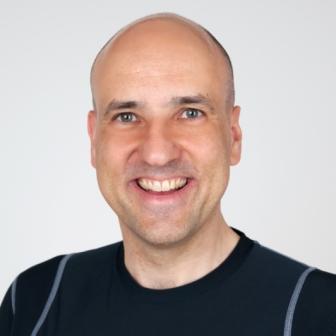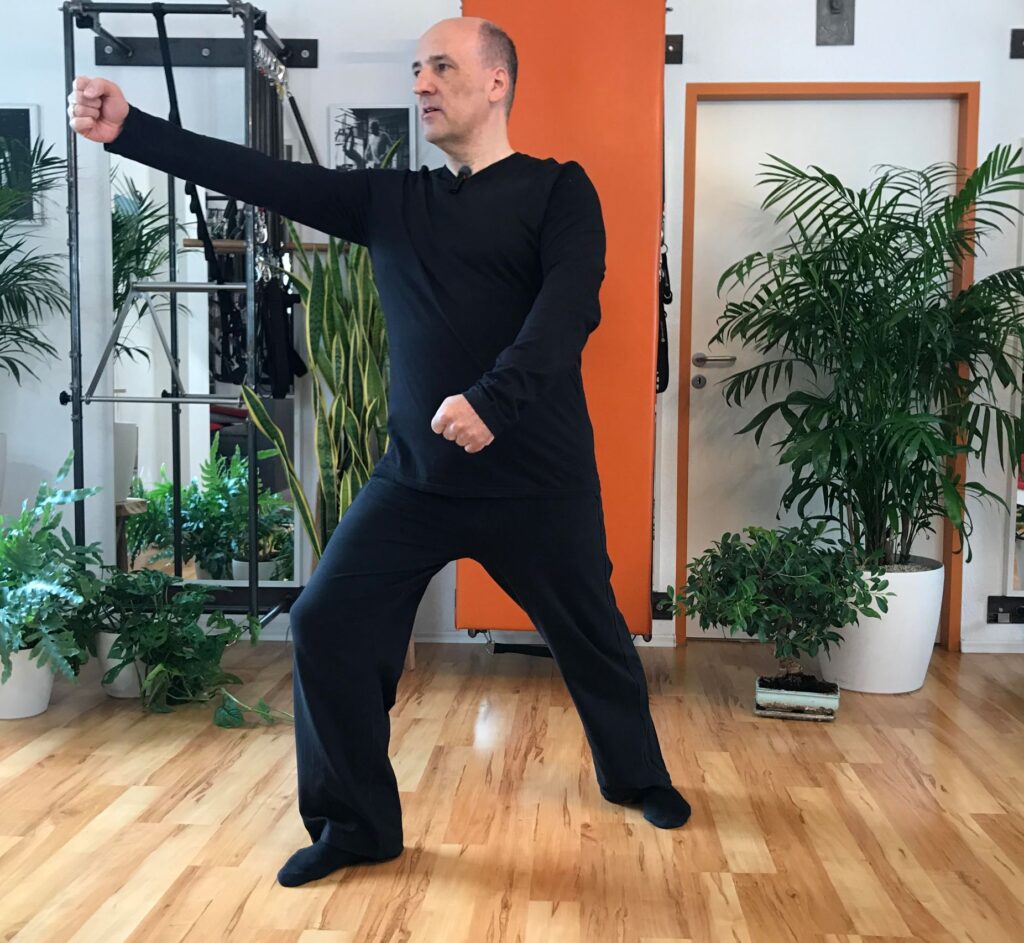Issue #403 – Wednesday, June 7, 2023
Discovering the Personal Connection between Kung Fu and Pilates?
by Reiner Grootenhuis
When we look at the origins of any development, we can often trace it back to a person’s upbringing and background. This is true for the Pilates method too. Many of the early master teachers had a background in dance, which greatly influenced their practice and teaching. However, I don’t come from a dance background. I’ve never been able to tune into the rhythm of a music piece, not even on a dance floor! Instead, I have a deep connection to Tai Chi, which I discovered when I was a teenager. For me, Tai Chi was the first time I felt comfortable while moving. All the sports I had practiced before felt strenuous and often painful, but Tai Chi was different. Later, while studying psychology at university, I met Weng Chun Grandmaster Andreas Hoffmann; over a span of ten years, he taught me the martial art of Weng Chun Kung Fu.
My personal connection between Kung Fu and Pilates:
In Weng Chun Kung Fu, there are subjective fighting principles, divided into four elements to be sought and three to be avoided. While I won’t go into all of them, there are three that are particularly relevant to Pilates: TAM (Greed), PA (Fear), and MONG (Confusion).
Greed can be harmful – in fighting and in Pilates. In both cases, it’s important to understand that progress is a process, not a destination. If you try to do too much too quickly, you may harm yourself and be set back on your journey. Your body won’t change overnight, so be patient and enjoy the journey.
Fear is another obstacle in both disciplines. People who have experienced pain in their lives are often afraid to move, fearing the pain will return. However, moving the tense and poorly supplied muscle groups has a long-term effect of pain relief and prevention. Facing fear is beneficial for Pilates practice, but it’s essential not to push yourself too hard.
Confusion can be detrimental to both fighting and Pilates. In more complex Pilates exercises, some people have difficulty remembering the sequence. Breaking the exercise down into simpler sub-parts can help you overcome confusion. Similarly, in one’s own learning and practicing, you may feel overwhelmed by the number of exercises and settings. Remember, all exercises are closely related, and an exercise is often just another way to practice an aspect or feeling.
There’s another aspect of Kung Fu that I’d like to share. In Weng Chun Kung Fu, there’s a concept called Wohlspannung, or balanced tension. If you put too much tension on a muscle, you have to relax it before you can move in the other direction. This can make the fighter too slow. Similarly, in Pilates, many people focus only on the active, moving part of the body, forgetting the rest of the body. Balancing tension throughout the body is essential for a successful Pilates practice.
Joseph Pilates writes in ”Return to Life Through Contrology”:
However, there is another important reason for consistently exercising all our muscles; namely, that each muscle may cooperatively and loyally aid in the uniform development of all our muscles. Developing minor muscles naturally helps to strengthen major muscles. As small bricks are employed to build large buildings, so will the development of small muscles help develop large muscles. Therefore, when all your muscles are properly developed you will of course perform your work with minimum effort and maximum pleasure.
Some dancers might look at the aesthetics of an exercise. In Kung Fu, the aesthetics are not relevant. Your only interest is to protect yourself and those around you. Hence, all body positions have a function. This is especially true in close quarters, where you and your opponent start to have leg or arm contact. If, as an example, the angle between your upper and lower arm is not optimal, your opponent can either lever the locked arm (too straightened), or easily can push it together with his punch (too soft and too bent). Therefore, you seek optimal angles between each part of your body to ensure you can defend and attack using your whole body.
What I am looking for watching a client doing an exercise is the connectedness of all parts of the body and meaningful angles. Do not get me wrong: This does not mean there are not straight legs or straight arms. In Kung Fu, you will also have fully extended arms or legs, because that is sometimes necessary to reach out wide enough or to transport your body’s energy through a punch. In Kung Fu you are very aware that the moment you move with your most power is at the same time the best opening for your opponent to channel this energy in another direction. It is like in the Yin and Yang symbol. A dot of white color is situated near the center of the black half and vice versa.
Try to take one of these ideas, avoiding greed, fear, and confusion or the balanced tension and angle of force, to your next Pilates session and see if you find it applicable. And as always, I am more than happy to discuss your findings.

Reiner started his professional career studying psychology, all the while studying Weng Chun, the martial and healing arts of the South Shaolin Monastery, in parallel. After completing his master’ degree in psychology, he first opened a Weng Chun Kung Fu school. He soon felt he should also put his investment into his psychology degree to better use and sold his school after a year to move into a long and successful corporate career in PR, market research and marketing, earning an MBA part-time – but all the while staying connected to the world of martial arts.
Reiner married, had 2 children and his desire to get back into the world of movement grew stronger. This was when he first learned about Pilates in the early 2000s. Once inspired, Pilates never let go of him. Reiner plunged headlong into everything he could find about the method and its history and completed his training as a Pilates trainer for mat and equipment at the Pilates training institute Body Arts & Science International.
In his desire to deepen and exchange knowledge with as many devoted teachers as possible, Reiner founded the online forum pilates-contrology-forum on Facebook in 2011, involving over 12k Pilates instructors. The forum was closed in 2020, but he stills runs the large marketplace for used Pilates equipment, pilates-contrology-marketplace with over 18k members as a community service.
In 2012, Reiner took the leap and opened his studio pilates-powers in Toenisvorst, only 25km from Joseph Pilates’ birthplace Moenchengladbach in Germany. He constantly expanded his rooms, equipment and offer and has even been running his own studio Pilates training program since 2014.
Due to his strong interest in the history, development and different interpretations of each exercise, Reiner is very interested in connecting with teachers all around the Pilates world. Particularly noteworthy points in his career in this regard include 2014, where Kathy Corey appointed him to the Board of Directors of the Pilates Heritage Congress, regularly held in said Moenchengladbach. Since 2016, under her guidance, he has been studying the intricacies of the teaching methods of the various teachers directly trained by Joseph Pilates. A personal highlight to him was his appointment as a Pilates Master Teacher by Kathy Corey in July 2019. Further noteworthy to mention is November 2017 when he was given the great honor of being appointed by Brett Miller to his “Pilates Intel” team of experts. Since then, he has been writing articles for “Pilates Intel” on a regular basis. Additionally, since September 2018, Reiner has been a member of the three-member Certification Committee of the German Pilates Association and has been heading this committee since 2020. And, last but not least, he is very proud to have recently been appointed to the Board of Directors of the World Pilates Confederation in 2022.
He has published the following book and manuals:
- Wunda Chair (in German)
- Arm Chair (in English & German)
- Cadillac part 1 and 2 (in English, German, Korean)
- Reformer part 1 and 2 (in English, German and soon in Korean)
- A biography about Carola Trier (in English & German)
- A Spine Corrector Manual is currently in preparation.




